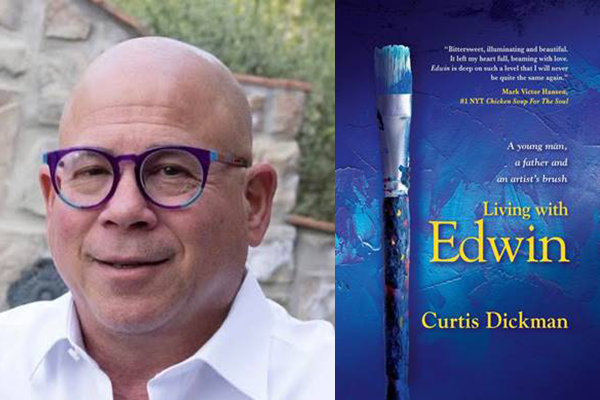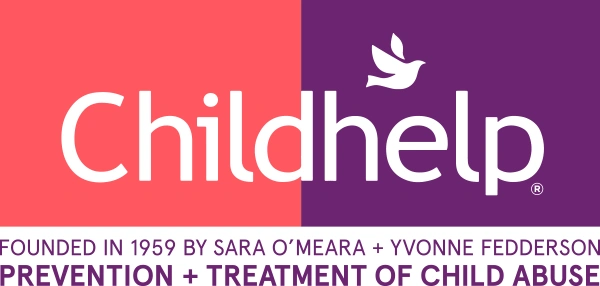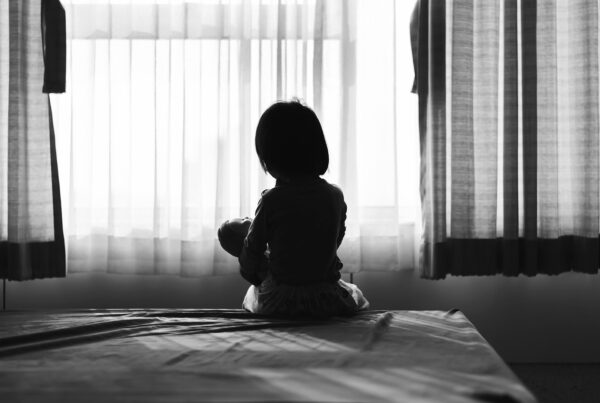
How long have you been with Childhelp and what drew you to the mission?
“I’ve been involved with Childhelp since 2014. I serve on the Arizona Advisory Board, financially support Childhelp’s mission and activities, and regularly donate my professional artwork for auction at Childhelp’s Drive the Dream annual gala.
I am drawn to Childhelp’s mission due to my personal experiences. I am a thriving survivor of childhood emotional, physical, and sexual abuse. I intimately understand the pain, suffering, distress, mistrust, shame, guilt, doubt and other feelings that victims of abuse endure. My own journey of recovery has inspired me to help other survivors. I am dedicated to facilitating the hope, spiritual & emotional peace that accompanies recovery from abuse. I have compassion and a strong commitment to aid abused children and prevent child abuse.”
An example of the artwork: http://artist.com/news-events/view/muhammad-ali-inspiration-lives-on/51/
Please share a little bit about your family and career.
” I was born in New York and moved to Arizona at the age of 16. I obtained my undergraduate degree in Psychology from Arizona State University and my M.D. with honors from the University of Arizona. After seven years of residency training in neurosurgery at the esteemed Barrow Neurological Institute (BNI) and a spine surgery fellowship at the University of Florida, I entered academic medicine at the BNI. I spent my medical career teaching practicing neurosurgeons, residents, fellows and medical students, performing clinical and basic science research, performing surgery, caring for patients, writing and publishing scientific articles, and developing new surgical techniques. I held the positions of Professor of Neurosurgery at the BNI, University of Arizona, and Creighton University; held an endowed chair of spinal surgery at the BNI and founded the spinal biomechanics research lab at BNI. I retired from medical practice in 2015.
Celeste and I have been married for 32 years. We carefully nurture our relationship and have a fulfilling marriage. We are close with our 3 children: Alexander (age 29), Rachel (age 27) and Jacob (age 20). We adopted our nephew Jacob (my sister Dana’s son) after Dana became incapacitated and died from complications of her unresolved PTSD.”
For many years, we knew you as a board member & donor, but you had your own survivor story. What gave you the strength to step forward and share your heart?
“Wow! Great question. I kept the subconscious memories of my abuse locked away for decades. In my 40’s, I began psychotherapy for my PTSD and concurrently began painting. I had the stereotypical “Stockholm Syndrome” which occurs commonly among abuse survivors. I held strong feelings of shame, guilt, doubt, resentment, defectiveness, and mistakenly thought I had somehow deserved the emotional and physical abuse that I endured as a child and adolescent. A decade of psychotherapy & art therapy resulted in significant improvement in my PTSD. I also discovered that my paintings wove an intimate story of my recovery.
In 2014, Jimmy Walker invited me to give an inspirational lecture called “Never Give Up” to a group of homeless people at our local St. Vincent De Paul shelter. I asked myself, “What could I say that is meaningful to homeless people?” I’ve never lived on the street or been without necessities. What could I say that would be helpful, genuine, credible, useful, and from the heart”?
As I thought about the prospect, I realized that addiction, mental illness, emotional suffering and post-traumatic stress disorder are common among homeless individuals. These are personal problems that I am intimately familiar with due to my painful childhood, crazy abusive family, and my own personal problems in life. I decided to speak about these delicate issues from a very personal perspective; from one soul who has suffered tremendously, reaching out to embrace others who are suffering.
It inspired me to share my own life story, using my paintings as the vehicle to share my personal feelings, tragedies, heartaches, and triumphs. This prospect made me feel very scared. I had never disclosed these deeply personal, closely guarded issues to anyone other than a therapist and my family, and certainly had never discussed them publicly.
I regularly lectured to thousands of other doctors regarding innovative surgical treatments and new medical technology without batting an eyelash. Yet, the prospect of talking about my feelings, bearing my heart and soul to a group of destitute strangers, made me feel vulnerable, naked and afraid. Yet, I knew deep inside that the risks were worth it. I wanted to reach out compassionately and share my tragedy, anguish, emotional healing, resurrection, survival and success.

I reluctantly, humbly gave my intensely heartfelt lecture to the crowd of 600 hungry, homeless people. It was a challenge to give this very personal talk. At several points I became tearful and “choked up”, especially when I discussed the tragic lives and deaths of my family members. However, I managed to stay on target, completed the inspirational lecture, and shared my main messages of hope and tools for healing and recovery.
Afterward, I felt raw and emotionally drained. I was deeply comforted by the outpouring of embraces, love and support that I received from the audience. Many people hugged me and said “God Bless You”. Several people from the audience and my friends encouraged me to write and broadly share my story of emotional healing and resurrection. These experiences inspired me to write this book Living with Edwin.”
What would you tell someone who may be keeping a traumatic past hidden from friends or even family?
“It’s very common for abuse survivors to feel shame, self-doubt, guilt and defectiveness. I would encourage them to actively pursue trauma specific therapies. I would also share my story of recovery, that we don’t have to exist as a victim, but be fulfilled and productive survivors.”
You’ve written a book called Living with Edwin. Tell us a little bit about the title and what it was like digging up the past and facing it in the writing process.
“My father’s name was Edwin. Living With Edwin examines the complex relationship that evolved between my dad and myself. It includes the good, the bad, and the ugly. Digging up the past was painful, and it allowed me to process my traumas and continue my recovery. Writing the book was a healing experience for me.”
What do you hope people get out of reading your story?
“I hope the book inspires compassion and understanding for individuals with PTSD. Another valuable lesson is that PTSD is a recoverable problem. People with PTSD can escape their suffering, shed the label that they are a victim, and be productive, fulfilled survivors.”
How can people get a copy of your book?
“My book can be ordered online through Amazon, Barnes & Nobles, and several other online bookstores. Autographed copies are available at https://livingwithedwin.com/bookstore-1“
Proceeds of the book will be donated to Childhelp, such a gift, why is that an important part of sharing your voice?
“I am inspired by Childhelp’s mission. I want to give back and to pay it forward. I believe we can heal our broken world and save precious lives one child at a time. Multiply this impact by the millions of children that Childhelp has served. Five children die every day from abuse. That’s #FiveTooMany.”
Art therapy is a big part of our mission and you are an accomplished artist. Can you describe how art is part of your personal therapeutic process?
“Art provides me emotional and spiritual outlets, it allows me to convey my feelings, values, and dreams. Art allows me to fully engage my brain and allows my feelings to explode onto my canvases.
I began painting on a whim 12 years prior using acrylics on canvas, right around the time I began counseling for emotional burnout. I was inspired to paint by my deceased father Edwin, who began painting after he became blind at the age of 47. After dad died in 1991, I inherited his paintings and hung them in my home, where they provide me with a daily reminder of my father’s courage.
How could a blind man paint? The idea sounds ludicrous and impossible. It’s paradoxical, like a deaf musical composer or an amputee runner. Edwin had the courage and determination to defy his disability and to never give up. His paintings are beautiful, symbolic, and deeply inspirational to me. His paintings are an important part of the legacy that he passed on to me, for better and for worse.
I never previously thought I had the aptitude to paint, but wondered, “If dad could paint beautiful images without any vision, what could I accomplish with vision?”
As a novice artist without any instruction, I was delighted to discover that my paintings were beautiful. I became absorbed in the process of painting and the personal messages that my paintings conveyed.
As I grew during counseling and evolved as an artist, my therapists assigned me “homework” to paint images of topics, feelings, and experiences. After creating each assigned painting, we would review the deep meanings and feelings conveyed by my work. We used the artwork as a therapeutic tool, to glimpse into my subconscious. My paintings were extraordinarily valuable to me. They conveyed deep feelings and were insightful; they accelerated the healing of my emotional wounds. I continued to paint regularly, inspired by my father and inspired to leave my own legacies to my children, interrupting the chain of generational abuse.”
Finally, you are taking part in the vision and development of the Childhelp Survivor Network. Why are you so passionate about this project?
“The Childhelp Survivors network is a wonderful opportunity to share information and resources with other individuals with PTSD. It is a way to connect people with compassionate techniques of healing and recovery.”


